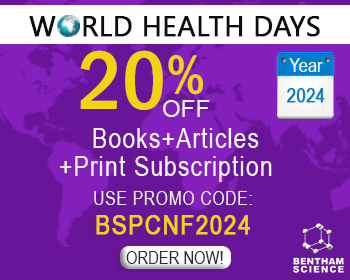Abstract
Background: Skin and soft tissue infections involve microbial invasion of the skin and underlying soft tissues. To overcome this problem, nanocomposites were obtained using gelatin as a biopolymer scaffold and silver nanoparticles as a wide spectrum antimicrobial agent. Water and glycerol have been used as solvents for the gelatin hydrogel synthesis. This mixture led to a stable and homogeneous biomaterial with improved mechanical properties.
Methods: Silver nanoparticles were characterized using SEM, EDS and TEM. Moreover, the AgNp/gelatin nanocomposite obtained using these nanoparticles was characterized using SEM and FTIR. Moreover, mechanical and swelling properties were studied.
Results: The storage modulus was 3000 Pa for gelatin hydrogels and reached 5800 Pa for AgNp/gelatin nanocomposite. Silver nanoparticles have been studied as an alternative to antibiotics. Importantly, the rate of silver release was modulated as a function of the temperature of the nanocomposite. Thus, the silver release from the nanocomposites at 24 °C and 38 °C was analyzed by atomic absorption spectroscopy. The silver release reached 25% after 24 h at 24 °C, while a 75% release was achieved at 38°C in the same period, showing the material thermoresponsive behavior. AgNp/gelatin nanocomposite showed a deleterious effect over 99.99% of Pseudomonas aeruginosa and Staphylococcus aureus, leading to a material with antimicrobial properties.
Conclusion: AgNp/gelatin nanocomposite with improved mechanical properties and silver nanoparticles as a source of silver ions has been synthesized. The properties of the nanocomposite with controlled silver delivery result in a more efficient topical pharmaceutical form for wound healing applications.
Keywords: Antimicrobial material, thermoresponsive material, silver nanoparticles, tissue engineering, wound healing, nanocomposite.
[http://dx.doi.org/10.1038/sj.jid.5700715] [PMID: 17435787]
[http://dx.doi.org/10.1016/j.clindermatol.2006.12.005] [PMID: 17276197]
[http://dx.doi.org/10.1038/sj.jid.5700701] [PMID: 17299434]
[http://dx.doi.org/10.1039/c4tb00327f]
[http://dx.doi.org/10.1111/j.1524-475X.2012.00836.x] [PMID: 22985037]
[http://dx.doi.org/10.1097/01.prs.0000225431.63010.1b] [PMID: 16799373]
[http://dx.doi.org/10.1111/dth.12055] [PMID: 23742280]
[http://dx.doi.org/10.1002/jps.21210] [PMID: 17963217]
[http://dx.doi.org/10.2147/IJN.S132163] [PMID: 29184409]
[http://dx.doi.org/10.3390/ijms19041210] [PMID: 29659523]
[http://dx.doi.org/10.2174/1381612823666170526094606] [PMID: 28552069]
[http://dx.doi.org/10.2174/138920101607150427112208] [PMID: 25934973]
[http://dx.doi.org/10.3390/ijms14034817] [PMID: 23455461]
[http://dx.doi.org/10.1002/pc.23684]
[http://dx.doi.org/10.1021/jp001803b]
[http://dx.doi.org/10.1016/S0169-4332(01)00634-1]
[http://dx.doi.org/10.1016/j.matlet.2012.08.048]
[http://dx.doi.org/10.1088/0957-4484/17/16/004] [PMID: 21727531]
[http://dx.doi.org/10.1002/chem.200400927] [PMID: 15565727]
[http://dx.doi.org/10.1021/jp074257w]
[http://dx.doi.org/10.1186/s11671-016-1725-x] [PMID: 27885623]
[http://dx.doi.org/10.1016/j.colsurfa.2009.02.008]
[http://dx.doi.org/10.1016/j.cis.2008.09.002] [PMID: 18945421]
[http://dx.doi.org/10.1016/j.msec.2019.02.010] [PMID: 30889753]
[http://dx.doi.org/10.1016/j.micromeso.2016.08.034]
[http://dx.doi.org/10.2174/0929867324666170511123101] [PMID: 28494717]
[http://dx.doi.org/10.5185/amlett.2019.2210]
[http://dx.doi.org/10.1007/978-94-009-0755-3_7]
[http://dx.doi.org/10.1016/j.foodhyd.2011.02.007]
[http://dx.doi.org/10.1021/jf048877v] [PMID: 15686405]
[http://dx.doi.org/10.1016/j.biomaterials.2013.09.078] [PMID: 24112804]
[http://dx.doi.org/10.1016/j.jconrel.2013.09.019] [PMID: 24096021]
[http://dx.doi.org/10.1016/j.actbio.2013.10.005] [PMID: 24140603]
[http://dx.doi.org/10.1021/acsami.6b11504] [PMID: 27802018]
[http://dx.doi.org/10.1016/j.colsurfb.2018.05.015] [PMID: 29751344]
[http://dx.doi.org/10.1007/s12649-016-9756-1]
[http://dx.doi.org/10.1016/j.foodchem.2009.05.049]
[http://dx.doi.org/10.1002/bip.360100913] [PMID: 5166550]
[http://dx.doi.org/10.1021/am303000v] [PMID: 23527784]
[http://dx.doi.org/10.1021/acsami.7b09009] [PMID: 28895728]
[http://dx.doi.org/10.1039/c3tb21067g]
[http://dx.doi.org/10.1016/j.foodhyd.2006.09.001]
[http://dx.doi.org/10.1016/j.foodhyd.2018.04.028]
[http://dx.doi.org/10.1016/j.msec.2017.08.059] [PMID: 28888014]
[http://dx.doi.org/10.1021/acsami.7b10049] [PMID: 28952307]
[http://dx.doi.org/10.1039/c3bm00014a]
[http://dx.doi.org/10.1016/j.ecoenv.2017.11.072]
[http://dx.doi.org/10.1016/j.ecolind.2017.01.018]
[http://dx.doi.org/10.1016/j.micromeso.2017.07.053]
[http://dx.doi.org/10.1016/j.xphs.2016.12.031] [PMID: 28131496]
[http://dx.doi.org/10.1001/jama.1936.02770140020007]
[http://dx.doi.org/10.1021/acsami.8b00192] [PMID: 29578679]
[http://dx.doi.org/10.1021/acsami.7b17274] [PMID: 29481051]
[http://dx.doi.org/10.1021/acsami.7b11969] [PMID: 29152974]
[http://dx.doi.org/10.1016/j.drudis.2014.11.014] [PMID: 25543008]
[http://dx.doi.org/10.1002/slct.201901115]
[http://dx.doi.org/10.1016/j.ijbiomac.2017.12.030] [PMID: 29258897]
[http://dx.doi.org/10.1016/j.ijbiomac.2017.11.015] [PMID: 29113886]
[http://dx.doi.org/10.1021/acsami.7b18141] [PMID: 29235844]
[http://dx.doi.org/10.1021/acsami.7b08209] [PMID: 29072441]
[http://dx.doi.org/10.1016/j.biopha.2016.09.004] [PMID: 27636513]
[http://dx.doi.org/10.1142/S0219581X16500204]



























